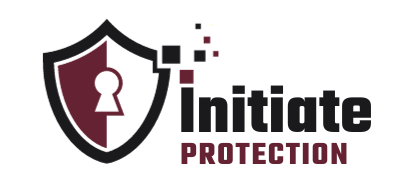Do you often worry about the safety of your confidential documents? With the rise of cyber attacks and data breaches, it’s a valid concern. In this fast-paced digital world, it’s more important than ever to ensure that our files are secure. In this article, we’ll discuss the importance of secure file sharing and how you can keep your documents safe.
What Is Secure File Sharing?
Secure file sharing is the secure transfer of sensitive or confidential documents over a network. This process involves utilizing encryption protocols and secure channels to ensure that only authorized individuals can access the shared files. Secure file sharing platforms offer features like password protection, access controls, and data encryption to protect the information. Popular services for secure file sharing include Dropbox, Google Drive, and Microsoft OneDrive. When selecting a secure file sharing solution, consider factors such as data privacy, user authentication, and file versioning capabilities. Following best practices and regularly updating security measures can further enhance the safety of file sharing processes.
Why Is Secure File Sharing Important?
Secure file sharing is of utmost importance in protecting sensitive information and ensuring data integrity. By restricting access to authorized individuals, it prevents unauthorized access and potential data breaches. This is especially crucial for businesses to comply with data protection regulations and safeguard customer and employee information.
Additionally, secure file sharing promotes collaboration by allowing teams to securely share and collaborate on files in real-time, regardless of their location. In today’s digital landscape, where cyber threats are prevalent, implementing secure file sharing practices is essential in safeguarding confidential information and preserving trust. In fact, a recent study showed that in 2020, 43% of cyberattacks specifically targeted small businesses, emphasizing the critical need for secure file sharing.
What Are The Risks Of Not Using Secure File Sharing?
Not utilizing secure file sharing can expose your sensitive information to various risks. Without proper security measures, unauthorized individuals can access, modify, or delete your files, leading to potential data breaches, identity theft, financial loss, and damage to your reputation. In addition, confidential information may be intercepted during transmission, compromising its confidentiality.
Furthermore, neglecting secure file sharing can result in legal and compliance issues, particularly if you handle sensitive data such as personal or financial information. Protect your documents by utilizing secure file sharing methods and platforms, implementing encryption and password protection, and regularly updating security measures.
Pro-tip: Always verify the security protocols of file sharing platforms to ensure the safety of your documents.
How Can You Keep Your Documents Safe While Sharing Them?
As technology advances, the ease of sharing documents online has become a common practice. However, with this convenience comes the risk of compromising the security of your documents. In this section, we will discuss the various measures you can take to ensure the safety of your documents while sharing them. From encryption and password protection to utilizing secure file sharing platforms and regularly updating security measures, we will cover all aspects of keeping your documents safe in the digital age.
1. Use Encryption
Using encryption is a crucial step to ensure secure file sharing. Here are some steps to follow:
- Choose a reliable encryption method, such as AES (Advanced Encryption Standard) or RSA (Rivest-Shamir-Adleman).
- Encrypt your files before sharing them using encryption software or tools.
- Create a strong encryption key or passphrase that is unique and known only to authorized individuals.
- Double-check that the encryption is applied correctly and that the files are securely encrypted.
- Send the encrypted files through a secure file-sharing platform or method.
- Provide the encryption key or passphrase separately to the intended recipient through a secure channel.
- Instruct the recipient to decrypt the files using the provided encryption key or passphrase.
By following these steps, you can ensure that your files are protected and only accessible to authorized individuals.
2. Utilize Password Protection
To effectively utilize password protection for secure file sharing, follow these steps:
- Create strong passwords: Use a combination of uppercase and lowercase letters, numbers, and symbols to ensure the security of your files.
- Implement two-factor authentication: Add an extra layer of security by requiring a verification code in addition to the password.
- Regularly update passwords: Change passwords periodically to prevent unauthorized access and keep your files safe.
- Avoid sharing passwords: Only provide access to authorized individuals and refrain from sharing passwords with others.
- Use a password manager: Securely store and manage your passwords with the help of password management tools.
3. Use a Secure File Sharing Platform
Using a secure file sharing platform is crucial for safeguarding your documents. Here are some steps to ensure secure file sharing:
- Choose a reputable and trusted file sharing platform that offers advanced security features.
- Enable end-to-end encryption to protect your files from unauthorized access.
- Implement user authentication measures, such as two-factor authentication, to ensure only authorized individuals can access the shared files.
- Regularly update the security measures of the platform, including applying patches and software updates.
- Monitor file activity to detect any suspicious or unauthorized access attempts.
By following these steps and utilizing a secure file sharing platform, you can safeguard your documents and maintain their confidentiality.
4. Regularly Update Security Measures
Regularly updating security measures is crucial for maintaining the safety of your shared documents. Here are important steps to follow:
- Stay up to date with software patches and updates provided by your file sharing platform.
- Regularly update your antivirus and antimalware software to protect against emerging threats.
- Implement a strong password policy and change passwords regularly.
- Enable two-factor authentication for an added layer of security.
By consistently following these steps to regularly update security measures, you can ensure that your documents remain protected from potential vulnerabilities and safeguarded against unauthorized access or data breaches. Regular maintenance is essential for maintaining the integrity and confidentiality of your shared files.
What Are The Best Practices For Secure File Sharing?
In today’s digital age, secure file sharing is crucial to protect sensitive information from potential cyber threats. But what are the best practices for ensuring the security of your documents? In this section, we will discuss key strategies for secure file sharing, including limiting access to documents, educating employees on secure practices, using strong passwords, and monitoring file activity. By implementing these practices, you can safeguard your files and keep them protected from unauthorized access.
1. Limit Access to Documents
To ensure secure file sharing and restrict access to documents, follow these steps:
- Classify your documents based on their sensitivity levels.
- Authorize only personnel with appropriate clearance to access sensitive documents.
- Implement role-based access controls to limit access based on job responsibilities.
- Secure document access with strong passwords and two-factor authentication.
- Regularly review and update access permissions as employees change roles or leave the organization.
The 2013 leak of classified documents by Edward Snowden from the National Security Agency highlighted the importance of limiting access to sensitive information. This incident sparked increased awareness and stricter security measures in file sharing practices.
2. Educate Employees on Secure File Sharing
Educating employees on secure file sharing is crucial in protecting sensitive information and preventing data breaches. Here are some steps to effectively educate employees:
- Provide training sessions on secure file sharing protocols and best practices.
- Explain the risks associated with improper file sharing and the potential consequences.
- Encourage employees to use strong passwords and regularly update them.
- Teach employees how to identify phishing emails and suspicious links.
- Explain the importance of encrypting documents before sharing them.
- Train employees on how to use secure file sharing platforms and tools.
In 2014, a major retail company experienced a significant data breach due to an employee unknowingly clicking on a malicious email attachment. This breach resulted in the theft of sensitive customer information and financial losses. This incident emphasized the critical need for employee education on secure file sharing practices to prevent similar incidents in the future.
3. Use Strong Passwords
Using strong passwords is crucial for secure file sharing. Here are steps to create strong passwords:
- Include a mix of uppercase and lowercase letters.
- Add numbers and special characters.
- Avoid using personal information, common words, or patterns.
- Make passwords at least 8-12 characters long.
- Use unique passwords for different accounts.
Fact: 3. Did you know that “123456” and “password” have consistently been the most commonly used passwords, making them highly vulnerable to hacking?
4. Monitor File Activity
Monitoring file activity is essential for maintaining the security of shared documents. Follow these steps to effectively monitor file activity:
- Implement a file auditing system to track and record all file access and modifications.
- Regularly review the audit logs to identify any suspicious or unauthorized activities.
- Set up real-time alerts for specific file actions, such as unauthorized access or large file transfers.
- Monitor user behavior to detect any abnormal patterns or unusual file access.
Pro-tip: Streamline file activity monitoring by utilizing security software that offers comprehensive auditing and reporting capabilities. This will help identify potential security breaches promptly and take immediate action to safeguard sensitive data.
What Are The Different Types of Secure File Sharing?
In today’s digital age, the need for secure file sharing has become increasingly important. However, with so many options available, it can be overwhelming to determine which type of secure file sharing is best for your needs. In this section, we will discuss the different types of secure file sharing, including cloud-based file sharing, peer-to-peer file sharing, secure email file sharing, and enterprise file sharing solutions. By understanding the differences between these options, you can make an informed decision on which type of secure file sharing is right for you.
1. Cloud-Based File Sharing
Cloud-based file sharing provides convenience and accessibility, but it’s crucial to follow proper security measures to safeguard your documents. Here are some steps to ensure secure file sharing in the cloud:
- Select a reputable cloud storage provider with robust encryption and data protection.
- Implement two-factor authentication to add an additional layer of security to your account.
- Establish access controls to restrict who can view, edit, or download your shared files.
- Regularly update your cloud storage platform and apps to ensure you have the latest security patches.
Pro-tip: Before sharing sensitive documents, consider encrypting them with a password or using a secure file sharing platform that offers end-to-end encryption for enhanced protection.
2. Peer-to-Peer File Sharing
Peer-to-peer file sharing is a direct method of transferring files between devices without relying on a central server. This method offers advantages such as faster transfer speeds and decentralized control. However, it also poses certain risks, including increased vulnerability to malware and copyright infringement. To engage in secure peer-to-peer file sharing, follow these steps:
- Use reputable peer-to-peer software that includes built-in security measures.
- Scan files for malware before sharing them.
- Enable encryption to safeguard the privacy of shared files.
- Regularly update your software to address any security vulnerabilities.
Similarly, a friend once shared a file with me using a peer-to-peer network. Unfortunately, the file contained malware that infected my computer. Since then, I have learned the importance of practicing secure file sharing to protect both my devices and personal information.
3. Secure Email File Sharing
In order to ensure secure email file sharing, it is important to take the following steps:
- Encrypt attachments: Use encryption tools to protect sensitive documents during transmission and ensure that only the intended recipient can access them.
- Set password protection: Add an extra layer of security by setting strong passwords for attachments.
- Use secure file transfer services: Opt for services that specialize in secure file transfer, providing encryption and password protection for email attachments.
- Enable two-factor authentication: Prevent unauthorized access to email accounts by implementing two-factor authentication.
4. Enterprise File Sharing Solutions
Enterprise file sharing solutions offer organizations secure and efficient ways to share documents both internally and externally. To successfully implement these solutions, follow these steps:
- Choose a reliable file sharing platform that prioritizes security.
- Establish access controls and permissions to restrict document access to authorized individuals.
- Educate employees on best practices for secure file sharing, such as avoiding public Wi-Fi networks.
- Enforce the use of strong passwords and two-factor authentication for added security.
- Regularly update security measures, including patches and software updates.
In 2014, a major cloud storage provider experienced a security breach that led to unauthorized access and exposure of user data. This incident emphasized the importance of implementing robust enterprise file sharing solutions to safeguard sensitive information and maintain the trust of customers and stakeholders.
Frequently Asked Questions
What is secure file sharing?
Secure file sharing is the process of transferring and storing digital documents in a way that ensures their confidentiality, integrity, and availability. This means that the files are protected from unauthorized access, tampering, and loss.
How can secure file sharing benefit me?
Secure file sharing can benefit you by providing peace of mind knowing that your sensitive documents are being kept safe. It also allows for easier collaboration with others without compromising the security of your documents.
What are some features of a secure file sharing system?
Some features of a secure file sharing system include end-to-end encryption, access controls, watermarking, and activity logs. These features work together to ensure that your documents are kept safe and can only be accessed by authorized individuals.
What are some common security risks when sharing files?
Some common security risks when sharing files include unauthorized access, data breaches, malware or viruses, and human error. These risks can compromise the confidentiality and integrity of your documents, making secure file sharing essential.
How do I choose a secure file sharing solution?
When choosing a secure file sharing solution, it is important to consider factors such as encryption methods, user authentication, and access controls. You should also look for a solution that offers regular security updates and has a good track record of protecting user data.
What steps can I take to ensure the security of my documents when sharing them?
To ensure the security of your documents when sharing them, you should use a secure file sharing system that offers features like encryption, access controls, and activity logs. It is also important to regularly update your passwords and be cautious when sharing files with unknown individuals.




